World Fine Art Professionals and their Key-Pieces, 398 - Natacha Mankowski
World Fine Art Professionals and their Key-Pieces, 398 – Natacha Mankowski
In Galerie Fleur & Wouter I saw the work of Natacha Mankowski in the exhibition ‘Painter’s Painters’. They are sturdy works where the paint is thick on top. In moderate yellow-white, green, light orange tones, a mix of elongated blocks can be seen, amidst more brick-like formats and again smaller squares. The grout-like paint, impasto sometimes, foams out.
It is very special work, to find out more I made an appointment with Natacha. Her studio turned out to be located in a ‘breeding ground’ in the middle of the building blocks of the Sloterdijk business park on the Isolatorweg.
Eco-conscious pastel
On the wall hang large works on linen and also on wood, as I have also seen them at the exhibition. Behind it are sketches on paper. Under the window are in a kind of preserving jars with pigments she gathers herself, in many colors. In front of me is a large metal kettle in which she makes her pastel sticks, elongated blocks of about ten centimeters.
She started it three years ago, she says. “I wanted to make my own pastel, sustainably.” She obtains the basic material from quarries and excavations. They are located on the Greek islands, such as Milos and Tinos. In Milos, it is an old Sulfur mine, in Tinos, it is the Panormos marble quarry, in the far North, close to the coast.
Raw material
She collects soil there, sometimes white (with marble), sometimes red (clay full of iron particles), sometimes green (green marble – serpentine). She takes them to her studio, now in Amsterdam, and then she tries to make paint from them on the one hand and elongated color blocks on the other. It took a lot of trial and error before she got good results. She started by adding wax to the paste, which got thicker and thicker, then tried to make it more fluid again with oil. In the end she found a good mix. Sometimes she adds pigments to give the paste the right color.
As for the sticks: they are manufactured in a metal kettle, just like candles on a string. “It works like ‘au bain-Marie'” she says. It is important that the water temperature does not rise too high. Not above 70 degrees Celsius.
Sculptor vs Painter
With a palette knife she then puts the paintings together like a bricklayer. Fitting parts, combining them until a beautiful structure is created. “I sometimes feel more like a sculptor than a painter.”
Natacha: “I evolve in the technical processes. It takes a lot of time. The drying of a painting can take up to three months. But that fits my “environmentally friendly” way of working. That’s how nature works. A series of Tinos works can be seen in the gallery. I’ve been working on that series for a year, it’s a total of 20 works. I am now working on the Milos series. Making the work is only a small part, I spend half my the time in the studio making the material, and I also spend a lot of time experimenting.”
Architect
Natacha is originally from Paris. She trained at the École Spéciale d’Architecture and worked as an architect at major firms such as those of Jean Nouvel and Vito Acconci before focusing on painting. Her architectural background is still strongly reflected in her paintings. It taught her how to study space and volume, and how to analyze an environment.
Create something yourself
But she was missing something when she worked for those big agencies. “I missed creating something. We built long-term projects there. Sometimes entire neighborhoods. I missed visible results from my work. I didn’t want to go to school anymore, to the art academy. I already had many tools and I felt that I could continue to learn on my own.”
She did many Art Residencies to learn from others. She was in Berlin for five years. She thought it was a nice city and she did learn a lot there. She came to Amsterdam two years ago and the work really took off there. At first with works of spaces, full of lines, which she made in Artspace Sloterdijk, but once she got a studio on the Isolatorweg, she went to work with her pastels and the manufacture of materials.
What is her experience of art life?
“Awesome. I’m never going back to my old job. You are your own master. You are on your own a lot and have to decide everything yourself. But I have the right character for that. It fits me. You can work together, and so do I. It is a balance between freedom and work routine. You learn continuously.
She is now working on a project for Le Magasin CNAC in Grenoble. It is a national center of art and culture, modeled on the model of the Kunsthal, in which artists are very much involved. There is a program of temporary exhibitions (every quarter) and events, developed in close collaboration with the guest artists.
November 18 was the opening. “We are two designers and two artists collaborating : Clemence Seilles from Stromboli Studio, Laure Jaffiel, Alexis Bondoux and myself. We have been given complete freedom. We furnished the entrance/welcome area, the library, the café and spaces for activities, including a children’s area and a workshop space. In this last room, there we are presenting a extra large curtain with a close-up of one of my paintings.”
Finally, what is her philosophy?
“The value I attach to ecology is reflected in all aspects of my work. It’s a process, you have to put in the effort. It is an important matter: taking the time that is needed to not speed up the drying, to not use plastic or toxic substances. Actually I developed an allergy From previously working with Turpentine, I developped an allergy. So now I am making a point to really question and research all the materials/substances that I am using. Every day I have to find solutions that contribute to sustainability to my level. It is exciting, but also difficult.”
What is her experience of art life?
“Awesome. I’m never going back to my old job. You are your own master. You are on your own a lot and have to decide everything yourself. But I have the right character for that. It fits me. You can work together, and so do I. It is a balance between freedom and work routine. You learn continuously.
She is now working on a project for Le Magasin CNAC in Grenoble. It is a national center of art and culture, modeled on the model of the Kunsthal, in which artists are very much involved. There is a program of temporary exhibitions (every quarter) and events, developed in close collaboration with the guest artists.
November 18 is the opening. “We are two designers and two artists: Scilles Clemence, Lorre Jaffiel, Alexis Bondaux and myself. We have been given complete freedom. We furnish the entrance/welcome area, the library, the coffee shop and the space for activities, including the children’s area. There will be a close-up of one of my paintings.”
Finally, what is her philosophy?
“The value I attach to ecology is reflected in all aspects of my work. It’s a process, you have to put in the effort. It is an important matter: taking the time that is needed to not speed up the drying, to not use plastic or toxic substances. Actually I developed an allergy from previously working with turpentine. So now I am making a point to really question and research all the materials/substances that I am using. Every day I have to find solutions that contribute to sustainability to my level. It is exciting, but also difficult.”
Images
1) Painting ‘Dressed in wild’, 2022, H 170 W 110 T 4 cm, linseed oil, pigments, wax, marble from Tinos island, Greece, on linen. Molded frame in oil pastel, 2) Detail from the painting Peeled back, 2022, 3) View of the old Sulfur Mines, in Milos island, Greece, 4) Sulfur from Milos, 5) Green marble, Serpentine, from Tinos, 6) Portrait by Seppe Elewaut, 7) Working with pastels in the studio, 8) Working on the canvas, 9) Mixing colors, 10) Curtain installation at CNAC Le magasin in Grenoble in collaboration with Stromboli Studio, Laure Jaffuel & Alexis Bondoux
https://www.natachamankowski.com/https://www.instagram.com/natachamankowski/https://www.galeriefleurenwouter.com/exhibitions/2022/10/22/painters-painters
https://ifthenisnow.eu/nl/verhalen/the-eco-conscious-pastels-of-natacha-mankowski
Disclaimer: The views, opinions and positions expressed within this guest article are those of the author Walter van Teeffelen alone and do not represent those of the Marbella Marbella website. The accuracy, completeness and validity of any statements made within this article are not guaranteed. We accept no liability for any errors, omissions or representations. The copyright of this content belongs to Walter van Teeffelen and any liability with regards to infringement of intellectual property rights remains with the author.

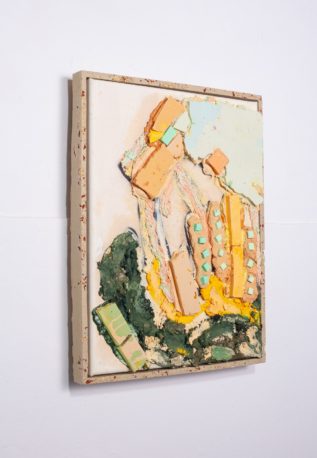
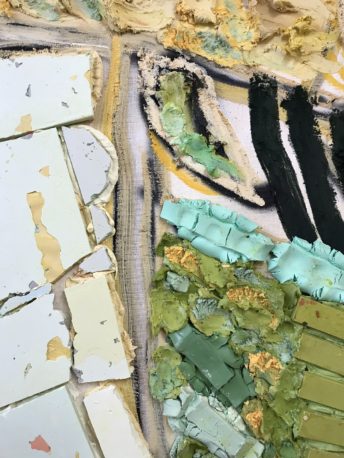

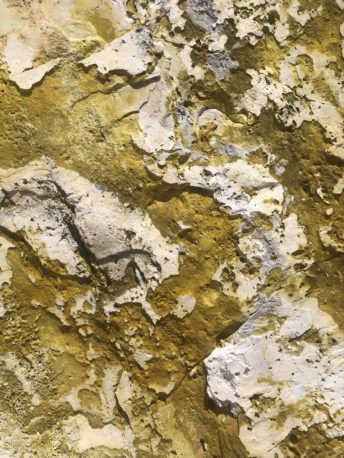
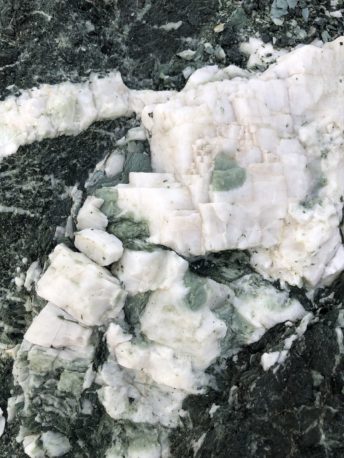
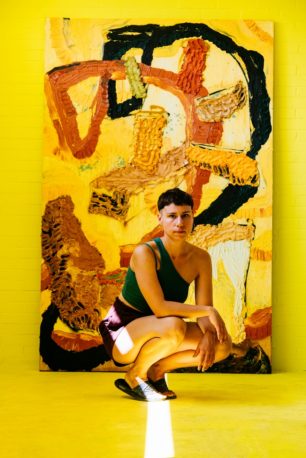
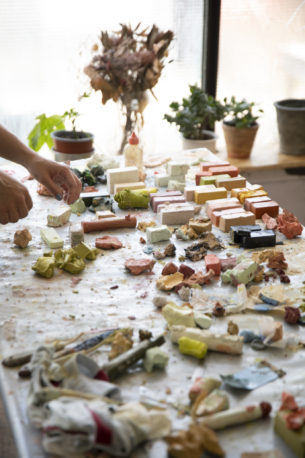
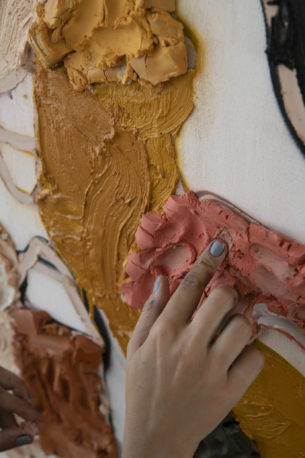
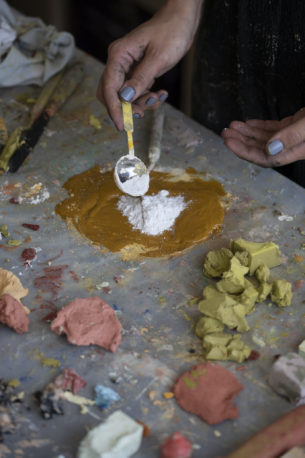















The opinions expressed by individual commentators and contributors do not necessarily constitute this website's position on the particular topic.